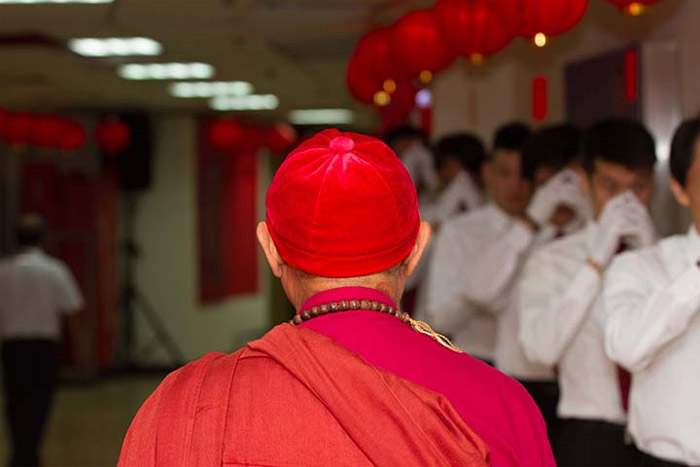Awakening to Life, Returning to the Source
 Q: Master Hsin Tao, what are the benefits of meditation for the average person? How can we use meditation to cultivate compassion? Is this something we need to actively attend to?
Q: Master Hsin Tao, what are the benefits of meditation for the average person? How can we use meditation to cultivate compassion? Is this something we need to actively attend to?A: You could say that meditation is a threefold practice consisting of concentrating the mind, transforming the way we think, and interacting with others. Practicing in this way, meditation becomes a way of life. This is the kind of practice we want to promote.
Q: Is this approach the same as that of humanistic Buddhism?
A: Modern Buddhist movements put a lot of emphasis on integrating Buddhism with our daily lives; yet the main thing is still going deep into the practice and transcending the world.
Q: Are you saying that despite the different approaches, what’s most important is using meditation to cultivate the wisdom that transcends all distinctions?
A: That’s right.
Q: These days lots of people are concernedn about how to deal with moods and emotions. What does Buddhism teach about regulating moods and emotions?
A: Meditation includes emotions. My teaching focuses on meditation, the practice of letting everything return to nothing.
Q: So, in meditation do emotions also return to nothing? Or is there some way of regulating them?
A: The important thing is to allow things to return to nothing, and how this transforms our lives.
Q: What are the unique tools or techniques of the Chan school for transcending the world, for letting things return to nothing?
A: The unique approach of Chan is the laying aside of all approaches. Transcendence is all about allowing things to return to nothing, to return to their source. There are lots of ways to allow things to return to nothing.
Q: Is it like what D.T. Suzuki wrote about using analysis to break through the constraints of logic?
A: Chan's system is to have no system. Chan meditation is a way of breaking through constricting frames of thought, perhaps including what you mean by "analysis." It's a way of using doubt in a skillful manner, so that you can go beyond constricting frames of thought.
Q: How can this teaching of returning to nothing and its benefits in terms of body, mind, and spirit be expressed in a way which is readily understandable to the average person?
A: Chan benefits body, mind, and spirit by helping you discover who you really are. Are you your thoughts and feelings? Chan meditation is a way of discovering your very basis and origin, based on which you undergo a kind of spiritual transformation. Do you understand?
Q: Can this only be done by practicing sitting meditation? Or are there other types of meditation that can bring about this same realization?
A: Meditation is a form of training; it's all about practice and realization. It’s a process of inquiry and understanding; practice brings awakening; awakening is understanding, practice is inquiring. It’s continually inquiring into who you really are. You keep inquiring until you understand your source. It’s something like managing the contents of a warehouse. First you clear out the old stock, and once the warehouse is empty, then you can decide what to fill it with. This is one way of looking at the stages of meditation. Sitting meditation is our main form of practice.
(Excerpt from Master Hsin Tao's new book The Power of Meditation, to be released in September 2017; to be continued in future installments of "The Way of the Heart.")